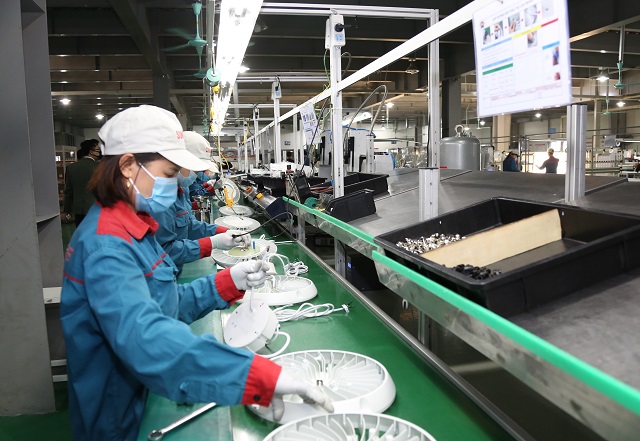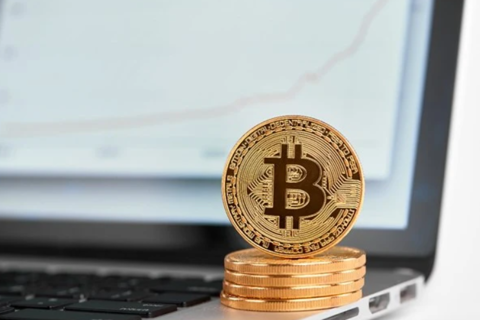Vietnam's GDP growth in 2021 set to hit 3% in 2021: UOB
Barring any major disruptions such as those from the Omicron variant, Vietnam is likely to move towards a more “normal” economic expansion of 7.4% in 2022.
With Vietnam’s GDP growth in the fourth quarter set to rebound to 7% year-on-year, the country’s 2021 full-year economic expansion may go up to 3%, according to Singapore-based United Overseas Bank (UOB).
| Home appliances production at SunHouse Group. Photo: Thanh Hai |
The positive economic performance was due to the fact that business activities have gradually resumed to normalcy since early October, after having suffered from an unprecedented contraction in headline GDP growth in the third quarter of -6.17%, as a result of the nationwide lockdowns and mobility restrictions in response to the fourth wave of Covid-19 infections, noted the UOB in its latest macro report.
Positive signs
These early positive signs were first reflected in the manufacturing sector, with the IHS Markit manufacturing Purchasing Managers’ Index (PMI) returning to above 50 in October after four months of contractions. The index rebounded sharply to 52.1 in October and then to 52.2 in November, from 40.2 in September.
Data from the General Statistics Office (GSO) also show signs that Vietnam’s business activities are normalizing especially for the external sectors including manufacturing and trade-related businesses.
Exports in November gained 18.5% year-on-year while imports rose 20.8%, with a trade surplus of US$100 million. As of November, export and import values have each reached a record high of $300 billion, well above the export value of $280 billion and import value of $262 billion in 2020.
However, the surge in imports has caused Vietnam’s trade surplus to fall sharply to $1.8 billion cumulatively in 2021, a fraction of the $20 billion surplus in 2020.
Equally important, industrial production rose 5.6% year-on-year in November, after three months of contraction as a result of lockdowns in many parts of the country. As of present, industrial production has risen nearly 5% year-on-year in January-November, above the 3.3% pace in the same period last year.
It is worth noting that despite the wave of Covid-19 infections and lockdowns during the year, foreign direct investment (FDI) inflows continued into the country.
This suggests that investors’ confidence remains high in Vietnam, which is a main production hub in the supply chain shifts as the Regional Comprehensive Economic Partnership (RCEP) came into force from January 1, 2022.
FDI inflows to Vietnam amounted to $26.5 billion as of November, keeping pace with that of 2020, as both existing and new FDI inflows totaled more than $22 billion, outpacing the $20 billion in the same period in 2020.
Barring any major disruptions such as those from the Omicron variant, Vietnam is likely to move towards a more “normal” economic expansion of 7.4% in 2022, higher than the Government’s targets of 6-6.5%, considering the low bases in 2020 and 2021 as well as the strength of its external sectors.
Steady policy rates to support recovery efforts
According to the UOB, Vietnam’s inflation rate held steady in November, at 2.1% year-on-year, largely driven by the jump in fuel costs, while other price components behaved relatively well. To date, inflation averaged at 1.8%, or half the 3.6% reading in the same period last year.
“As such, inflation is on track for a moderate increase of 1.9% in 2021 against 3.2% last year, and then rising to 3.2% in 2022,” noted the bank.
With a relatively benign inflation backdrop and an uncertain outlook posed by the emerging Omicron variant of Covid-19 just as the country regained its footing from the last wave of infections, the State Bank of Vietnam (SBV) is likely to keep its policy rates steady to support the recovery efforts. As the situation is expected to be managed well eventually just like it had done so before, both the refinancing rate at 4.0% and the rediscounting rate at 2.5% will remain at record lows for now.
Meanwhile, the Vietnam dong (VND) has been gradually appreciating against the USD across the year, with gains accelerating after Vietnam has reached an agreement with the US Treasury in July to refrain from deliberately weakening the VND to gain an export advantage.
The VND touched its strongest level since February 2017 on November 12, at 22,645 /USD as compared to 23,080 /USD at the start of the year. In December, VND reversed sharply after a series of weak VND fixings with a higher demand to buy USD/VND from both corporate clients and banks’ trading activity.
“The move erased all of VND’s YTD gains, with the USD/VND trading at about 23,100/USD as of December 15,” stated the UOB.
While the US Treasury has refrained from naming Vietnam as an FX manipulator in the latest report in December, the country has met all three criteria for the label. As such, Vietnamese authorities would want to avoid the recent market volatility and to be seen as a “competitive devaluation”.
“Overall, we expect USD/VND to continue to rise, alongside the trend for other USD/Asia pairs as the Fed begins its rate hikes next year. Our updated USD/VND forecasts are at 23,100 in the first quarter of 2022, 23,200 in the second quarter, 23,300 in the third, and 23,400 in the fourth,” it concluded.












